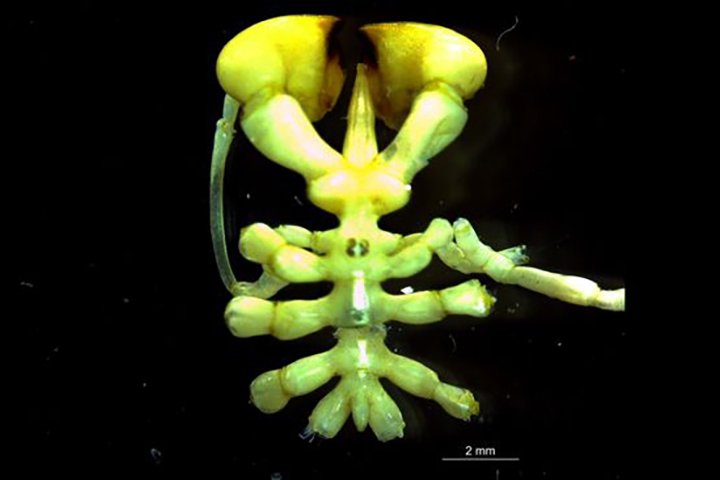Antarctic researchers identify new sea spider
Species notable for oversized claws, black eyes
A CMU biology professor and his graduate student have identified a new species of mysterious animal that lives more than a thousand feet beneath the surface of the Antarctic’s icy waters.
Biology professor Andrew Mahon and doctoral student Jessica Zehnpfennig identified the new species – called Austropallene halanychi – as a sample gathered during a 2013 expedition to the Antarctic that included CMU researchers.
The two published a paper announcing it last year.
It’s a newly identified species of sea spider, a little-known relative of horseshoe crabs and arachnids. More than 1,000 species of sea spiders exist around the world. They eat through long tubes called proboscis and breathe through their legs.

The new species is notable for its large boxing glove-like claws that Mahon said are probably used to grab and hold soft-bodied animals sea spiders normally eat.
A. halanychi was collected at a depth of approximately 1,850 feet from the Ross Sea.
Mahon and Zehnpfennig recently returned from a 2023 expedition aboard the same ship – the Nathaniel B. Palmer – that took them to the continent’s east side. It’s a less explored part of Antarctica than the Ross Sea, which forms a large bay on the west side of Antarctica. Mahon has made numerous research trips to the Antarctic.
Specimens were gathered during the most recent trip, too. They were shipped back to Mount Pleasant for identification. Mahon said that he hoped that last year’s trip would help them develop insights into the region’s biodiversity.
They also hoped to establish a link between species found on the continent’s two sides. It’s believed the two were connected by marine seaways when there was less ice.
Researching the Antarctic is critical because it could provide some clues into how climate change is affecting biodiversity. Little is known about what lives on the sea floor.
Mahon said that he is concerned that a rapidly warming sea is causing damage that no one will ever understand for lack of knowing what is currently there.




